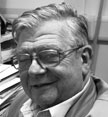 Walter Bodmer was two-and-a-half years old when his family fled Germany in 1938. While attending Cambridge University on a math scholarship, he took Ronald Fisher’s course on the statistics of population genetics. “It was a moment that changed my life,” he says. Fisher, later his doctoral advisor, counseled him to look beyond theoretical genetics, which Bodmer interpreted to mean, “Go west, young man, and study molecular biology.” Heeding this advice, he did a postdoc in Joshua Lederberg’s lab at Stanford, where Bodmer ultimately became a full professor in the genetics department of the medical school. In 1970 he moved to Oxford University, and in 1979 became director of research and later director general of the Imperial Cancer Research Fund. While science is his “great pleasure,” Bodmer occasionally finds time to play the piano, ride, and scuba dive. A contributor to the first issue of The Scientist, he introduces our special...
Walter Bodmer was two-and-a-half years old when his family fled Germany in 1938. While attending Cambridge University on a math scholarship, he took Ronald Fisher’s course on the statistics of population genetics. “It was a moment that changed my life,” he says. Fisher, later his doctoral advisor, counseled him to look beyond theoretical genetics, which Bodmer interpreted to mean, “Go west, young man, and study molecular biology.” Heeding this advice, he did a postdoc in Joshua Lederberg’s lab at Stanford, where Bodmer ultimately became a full professor in the genetics department of the medical school. In 1970 he moved to Oxford University, and in 1979 became director of research and later director general of the Imperial Cancer Research Fund. While science is his “great pleasure,” Bodmer occasionally finds time to play the piano, ride, and scuba dive. A contributor to the first issue of The Scientist, he introduces our special...
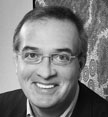 Stephen Friend spent the first part of his career in academia, researching the genes behind cancer. In October 1986, just as The Scientist was publishing its first issue, a team led by Friend—then at the Whitehead Institute for Biomedical Research—published a Nature paper describing the first-ever cloning of a cancer susceptibility gene. A decade later, Friend cofounded the DNA analysis company Rosetta Inpharmatics, launching the second phase of his career. When Rosetta was purchased by Merck & Co. in 2001, Friend served as the pharmaceutical behemoth’s influential cancer guru. Now at the helm of his new company, Sage Bionetworks, Friend is seeking to construct an open database where researchers from across the globe can share genomic data, forming what he calls a “commons” ("Opinion: Thinking Outside the Genome") where insights can be shared, massive data sets integrated, and groundbreaking drug discoveries accelerated. “Without sharing the data and putting the patient at the center all we’re going to make is linear progression in a field which needs exponential progress,” he says.
Stephen Friend spent the first part of his career in academia, researching the genes behind cancer. In October 1986, just as The Scientist was publishing its first issue, a team led by Friend—then at the Whitehead Institute for Biomedical Research—published a Nature paper describing the first-ever cloning of a cancer susceptibility gene. A decade later, Friend cofounded the DNA analysis company Rosetta Inpharmatics, launching the second phase of his career. When Rosetta was purchased by Merck & Co. in 2001, Friend served as the pharmaceutical behemoth’s influential cancer guru. Now at the helm of his new company, Sage Bionetworks, Friend is seeking to construct an open database where researchers from across the globe can share genomic data, forming what he calls a “commons” ("Opinion: Thinking Outside the Genome") where insights can be shared, massive data sets integrated, and groundbreaking drug discoveries accelerated. “Without sharing the data and putting the patient at the center all we’re going to make is linear progression in a field which needs exponential progress,” he says.
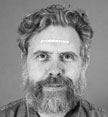 Having completed his bachelor’s degree in 1974 after just 2 years at Duke University, George Church decided to stay on to do graduate work in crystallography. But during his second year, he flunked out. “I got so into that research that I just didn’t pay attention to my classes,” he recalls, and ended up failing enzyme mechanics and metabolism. He later joined Walter Gilbert’s lab at Harvard University, where he earned his PhD by helping to sequence and construct the first semisynthetic plasmid, Pbr322, and developing a new method for genomic sequencing. After very brief postdocs—at biotech company Biogen and then at the University of California, San Francisco—Church returned to Harvard in 1986, where he’s been advancing genomics and synthetic biology for the last 25 years. In this issue he writes about the rationale for doing synthetic biology in "Opinion: Evolving Engineering."
Having completed his bachelor’s degree in 1974 after just 2 years at Duke University, George Church decided to stay on to do graduate work in crystallography. But during his second year, he flunked out. “I got so into that research that I just didn’t pay attention to my classes,” he recalls, and ended up failing enzyme mechanics and metabolism. He later joined Walter Gilbert’s lab at Harvard University, where he earned his PhD by helping to sequence and construct the first semisynthetic plasmid, Pbr322, and developing a new method for genomic sequencing. After very brief postdocs—at biotech company Biogen and then at the University of California, San Francisco—Church returned to Harvard in 1986, where he’s been advancing genomics and synthetic biology for the last 25 years. In this issue he writes about the rationale for doing synthetic biology in "Opinion: Evolving Engineering."
 Craig Venter’s first exposure to science and medicine came when he was drafted into the US military in 1965, not long after he had graduated from high school and moved to southern California to surf. He trained as a medic and worked at Balboa Navy Hospital in San Diego before shipping off to Vietnam to serve as a hospital corpsman. “I learned the more knowledge I had, the more lives I could save,” Venter recalls. So when he returned in 1967, he started studying biology, earning his bachelor’s in biochemistry in 1972, and his PhD in physiology and pharmacology just 3 years later. A job offer from NIH in 2004 prompted Venter to switch gears to genomics, where he has continued to advance DNA sequencing technologies. In 2006, he founded the J. Craig Venter Institute, and last year announced that his team had constructed the first bacterium to run off a synthetic genome. In "Opinion: Synthesizing Life" he discusses the challenges of designing life from scratch.
Craig Venter’s first exposure to science and medicine came when he was drafted into the US military in 1965, not long after he had graduated from high school and moved to southern California to surf. He trained as a medic and worked at Balboa Navy Hospital in San Diego before shipping off to Vietnam to serve as a hospital corpsman. “I learned the more knowledge I had, the more lives I could save,” Venter recalls. So when he returned in 1967, he started studying biology, earning his bachelor’s in biochemistry in 1972, and his PhD in physiology and pharmacology just 3 years later. A job offer from NIH in 2004 prompted Venter to switch gears to genomics, where he has continued to advance DNA sequencing technologies. In 2006, he founded the J. Craig Venter Institute, and last year announced that his team had constructed the first bacterium to run off a synthetic genome. In "Opinion: Synthesizing Life" he discusses the challenges of designing life from scratch.
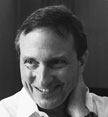 Thomas Lovejoy began his “grand science adventure” in Brazil as a Yale PhD student studying the ecology of birds in the Amazon. In 1979, while director of World Wildlife Fund-US, he initiated the Minimal Critical Size of Ecosystems Project, an enormous (1,000 km2) and still ongoing experiment in the Amazon Basin near Manaus that gathers data about how forest fragmentation affects species change and extinction. Among his many firsts as a pioneer in the field of conservation biology Lovejoy numbers the first projection of global extinction rates and the introduction of the concept of debt-for-nature swaps. He also founded the public television series “Nature.” His most recent book, with Lee Hannah, is Climate Change and Biodiversity (Yale University Press 2005). In "Conserving Our Shared Heritage" Lovejoy explains why conserving biodiversity is imperative.
Thomas Lovejoy began his “grand science adventure” in Brazil as a Yale PhD student studying the ecology of birds in the Amazon. In 1979, while director of World Wildlife Fund-US, he initiated the Minimal Critical Size of Ecosystems Project, an enormous (1,000 km2) and still ongoing experiment in the Amazon Basin near Manaus that gathers data about how forest fragmentation affects species change and extinction. Among his many firsts as a pioneer in the field of conservation biology Lovejoy numbers the first projection of global extinction rates and the introduction of the concept of debt-for-nature swaps. He also founded the public television series “Nature.” His most recent book, with Lee Hannah, is Climate Change and Biodiversity (Yale University Press 2005). In "Conserving Our Shared Heritage" Lovejoy explains why conserving biodiversity is imperative.
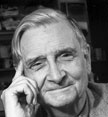 Myrmecologist and evolutionary biologist Edward O. Wilson has certainly been no stranger to controversy. Motivated by what he calls a “talent for synthesis,” he published Sociobiology: The New Synthesis in 1975 to a storm of criticism from academics. In Consilience (1998) he employed that talent yet again. Wilson is a prolific author and the winner of two Pulitzer Prizes for nonfiction. His book, The Social Conquest of Earth, a comprehensive work on the origin and impact of advanced social behavior in humans (and other animals), ten years in the making, is due out in April 2012. In progess is a book on the Gorongosa National Park in Mozambique, where he is currently “engaged in boots-on-the ground studies of ants.” Wilson is also a passionate advocate for species conservation. Why cataloging all of life is necessary to “sustainably manage the global environment” is the subject of his article: "Opinion: Exploring a Little-Known Planet."
Myrmecologist and evolutionary biologist Edward O. Wilson has certainly been no stranger to controversy. Motivated by what he calls a “talent for synthesis,” he published Sociobiology: The New Synthesis in 1975 to a storm of criticism from academics. In Consilience (1998) he employed that talent yet again. Wilson is a prolific author and the winner of two Pulitzer Prizes for nonfiction. His book, The Social Conquest of Earth, a comprehensive work on the origin and impact of advanced social behavior in humans (and other animals), ten years in the making, is due out in April 2012. In progess is a book on the Gorongosa National Park in Mozambique, where he is currently “engaged in boots-on-the ground studies of ants.” Wilson is also a passionate advocate for species conservation. Why cataloging all of life is necessary to “sustainably manage the global environment” is the subject of his article: "Opinion: Exploring a Little-Known Planet."
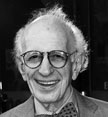 Eric Kandel started studying neuroscience when it was a “minority science,” with most budding scientists uninterested in either the boring anatomical aspects or the more complicated electrophysiology. However, Kandel’s education was greatly influenced by the legends of neuroscience who were alive and teaching when he was a student. He earned Nobel Prize in 2000 for working out the cellular and molecular circuitry of memory in the sea slug Aplysia, and in "Interview: Speaking of Memory" he reminisces about his “young and restless” days in a field that would become immensely popular and well-studied.
Eric Kandel started studying neuroscience when it was a “minority science,” with most budding scientists uninterested in either the boring anatomical aspects or the more complicated electrophysiology. However, Kandel’s education was greatly influenced by the legends of neuroscience who were alive and teaching when he was a student. He earned Nobel Prize in 2000 for working out the cellular and molecular circuitry of memory in the sea slug Aplysia, and in "Interview: Speaking of Memory" he reminisces about his “young and restless” days in a field that would become immensely popular and well-studied.
 Science advocacy is a calling for Mary Woolley. Now president of Research!America, Woolley says that she had once entertained the notion of doing public health research. But she was tapped to lead the Medical Research Institute of San Francisco in the 1980s, and became a staunch science advocate, a role to which she calls all scientists in her essay, "Opinion: Research and Debt Reduction." “Advocating for science is not a spectator sport,” she says. “If everybody in the science community did just a little, even an hour a month, it would make a huge difference.” Woolley adds that she’s never faced a tougher political environment, with research budgets under attack and talks of spending cuts swirling about the US Capitol. “Washington is the toughest environment I’ve ever worked in, but I keep coming back for more,” she says. “I still wake up every morning excited about it.”
Science advocacy is a calling for Mary Woolley. Now president of Research!America, Woolley says that she had once entertained the notion of doing public health research. But she was tapped to lead the Medical Research Institute of San Francisco in the 1980s, and became a staunch science advocate, a role to which she calls all scientists in her essay, "Opinion: Research and Debt Reduction." “Advocating for science is not a spectator sport,” she says. “If everybody in the science community did just a little, even an hour a month, it would make a huge difference.” Woolley adds that she’s never faced a tougher political environment, with research budgets under attack and talks of spending cuts swirling about the US Capitol. “Washington is the toughest environment I’ve ever worked in, but I keep coming back for more,” she says. “I still wake up every morning excited about it.”
 Chad Mirkin can’t recall when he first heard the term “nano,” but today he’s recognized as one of the world’s leading experts in the field. Mirkin has authored more than 430 manuscripts, founded three nanotechnology companies, and is currently listed as the most cited chemist in the world. After a globe-trotting childhood—with stints in Korea, Malaysia, and Pennsylvania—he landed at MIT for his postdoc in the 1990s. It was there that he became fascinated with nanotechnology, and taught himself how to manipulate structures with sub-100 nm dimensions. “It was kind of a science fiction type thing that became real science with the advent of these new tools,” Mirkin said. He writes about the potential that nanotechnology brings to the medical profession in"Opinion: Miniaturizing Medicine."
Chad Mirkin can’t recall when he first heard the term “nano,” but today he’s recognized as one of the world’s leading experts in the field. Mirkin has authored more than 430 manuscripts, founded three nanotechnology companies, and is currently listed as the most cited chemist in the world. After a globe-trotting childhood—with stints in Korea, Malaysia, and Pennsylvania—he landed at MIT for his postdoc in the 1990s. It was there that he became fascinated with nanotechnology, and taught himself how to manipulate structures with sub-100 nm dimensions. “It was kind of a science fiction type thing that became real science with the advent of these new tools,” Mirkin said. He writes about the potential that nanotechnology brings to the medical profession in"Opinion: Miniaturizing Medicine."
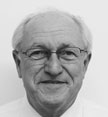 Over 25 years, editorial staff members have come and gone and ownership of The Scientist has changed hands, but Bob Jordan has been a constant presence. He joined Eugene Garfield’s Institute for Scientific Information in 1979 as a staff accountant—7 years before The Scientist made its debut in 1986. In 1989, after Garfield sold a majority interest in ISI but retained the magazine, Bob took on his current job as controller and operations director. In this role he has been involved in many changes at the magazine, including its sale to the Science Navigation Group in 2010. Often asked why he’s stayed with the company for so long Bob says, “The Scientist was Garfield’s dream—a labor of love. It was run like a family business: always putting employees first.”
Over 25 years, editorial staff members have come and gone and ownership of The Scientist has changed hands, but Bob Jordan has been a constant presence. He joined Eugene Garfield’s Institute for Scientific Information in 1979 as a staff accountant—7 years before The Scientist made its debut in 1986. In 1989, after Garfield sold a majority interest in ISI but retained the magazine, Bob took on his current job as controller and operations director. In this role he has been involved in many changes at the magazine, including its sale to the Science Navigation Group in 2010. Often asked why he’s stayed with the company for so long Bob says, “The Scientist was Garfield’s dream—a labor of love. It was run like a family business: always putting employees first.”
Interested in reading more?
